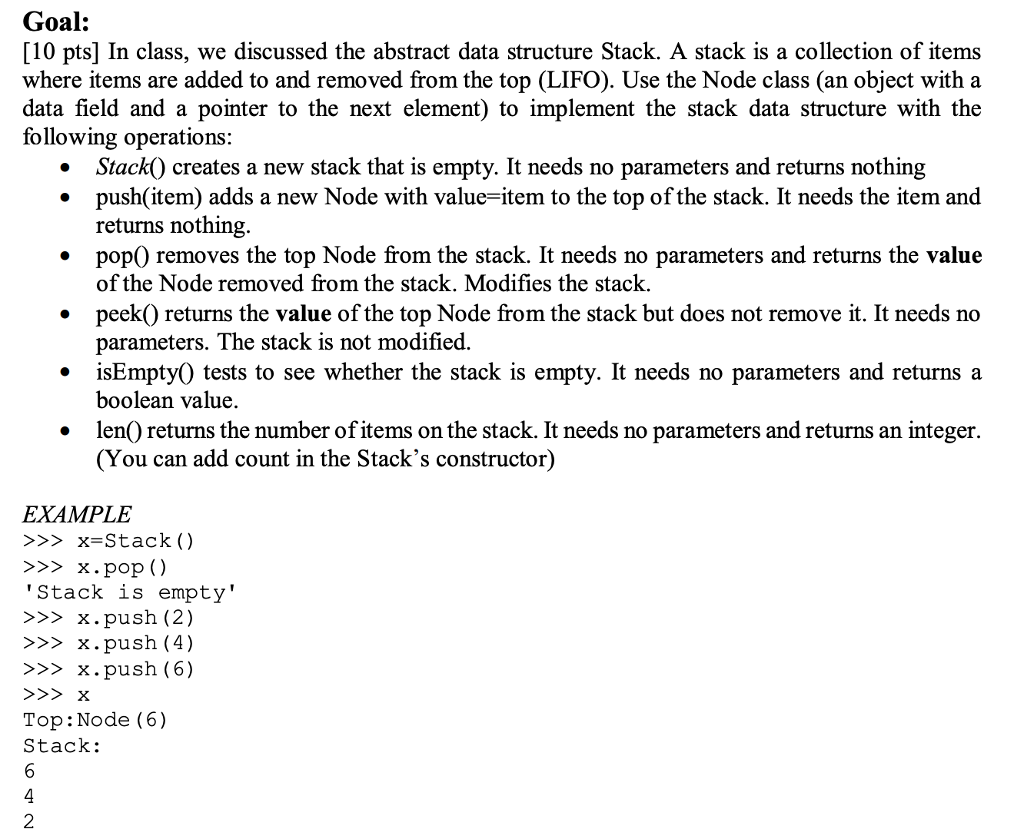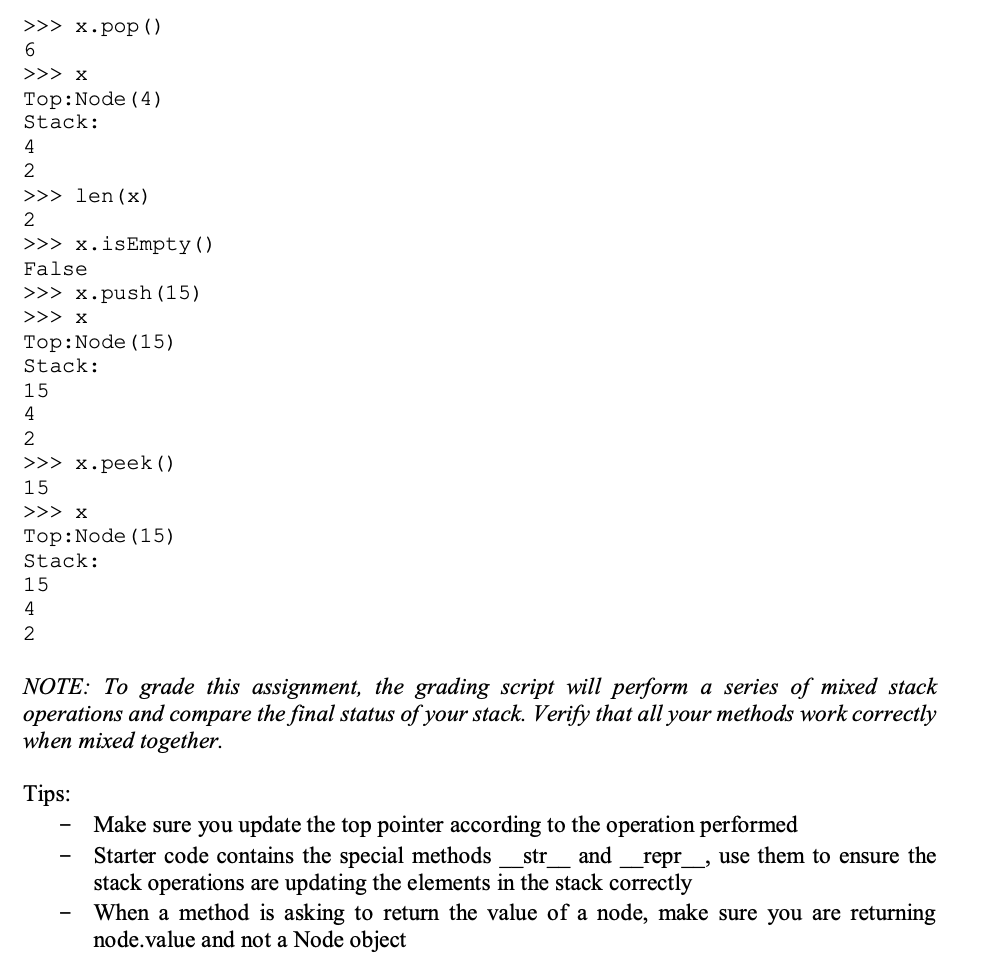Question
Write code in Python class Node: def __init__(self, value): self.value = value self.next = None def __str__(self): return Node({}).format(self.value) __repr__ = __str__ class Stack: '''
Write code in Python


class Node:
def __init__(self, value):
self.value = value
self.next = None
def __str__(self):
return "Node({})".format(self.value)
__repr__ = __str__
class Stack:
'''
Creates an empty Stack with support for push and pop operations
>>> x=Stack()
>>> x.pop()
'Stack is empty'
>>> x.push(2)
>>> x.push(4)
>>> x.push(6)
>>> x
Top:Node(6)
Stack:
6
4
2
>>> x.pop()
6
>>> x
Top:Node(4)
Stack:
4
2
>>> len(x)
2
>>> x.peek()
4
'''
def __init__(self):
self.top = None
def __str__(self):
temp=self.top
out=[]
while temp:
out.append(str(temp.value))
temp=temp.next
out=' '.join(out)
return ('Top:{} Stack: {}'.format(self.top,out))
__repr__=__str__
def isEmpty(self):
#write your code here
def __len__(self):
#write your code here
def peek(self):
#write your code here
def push(self,value):
#write your code here
def pop(self):
#write your code here
Goal: [10 pts] In class, we discussed the abstract data structure Stack. A stack is a collection of items where items are added to and removed from the top (LIFO). Use the Node class (an object with a data field and a pointer to the next element) to implement the stack data structure with the following operations: * Stack0 creates a new stack that is empty. It needs no parameters and returns nothing * push(item) adds a new Node with value-item to the top of the stack. It needs the item and returns nothing. pop) removes the top Node from the stack. It needs no parameters and returns the value of the Node removed from the stack. Modifies the stack. * peek) returns the value of the top Node from the stack but does not remove it. It needs no parameters. The stack is not modified. * * isEmpty) tests to see whether the stack is empty. It needs no parameters and returns a boolean value. len() returns the number of items on the stack. It needs no parameters and returns an integer. (You can add count in the Stack's constructor) * EXAMPLE >>>x-Stack() >>> x.pop () Stack is empty' >>x.push (2) >>>x.push (4) >>>x.push (6) Top: Node (6) Stack: 2Step by Step Solution
There are 3 Steps involved in it
Step: 1

Get Instant Access to Expert-Tailored Solutions
See step-by-step solutions with expert insights and AI powered tools for academic success
Step: 2

Step: 3

Ace Your Homework with AI
Get the answers you need in no time with our AI-driven, step-by-step assistance
Get Started


